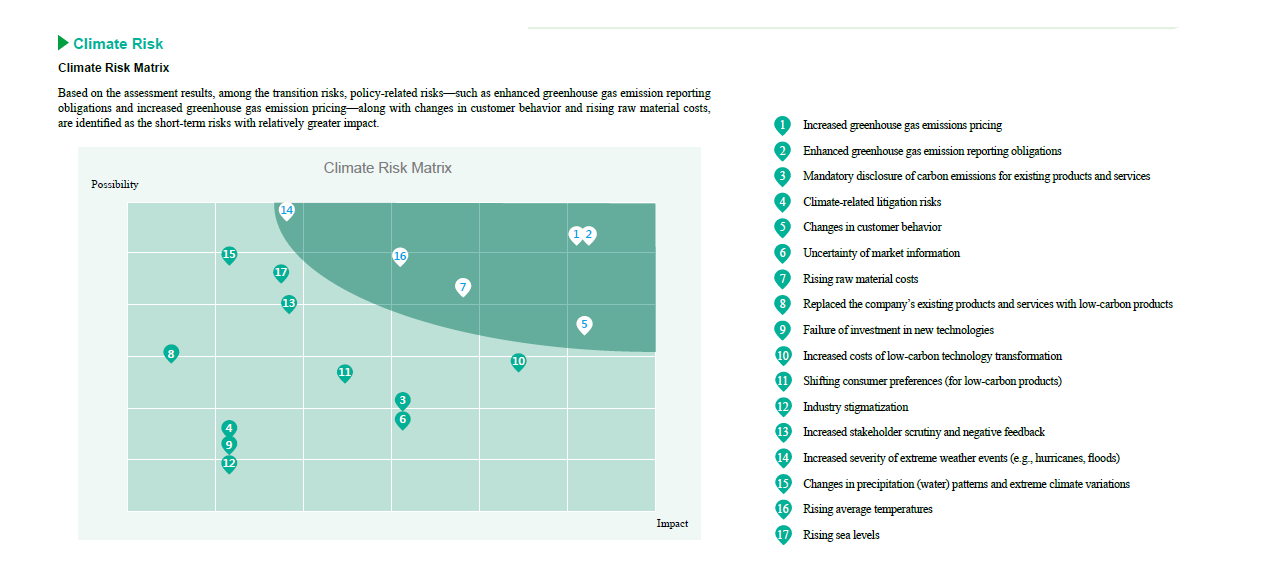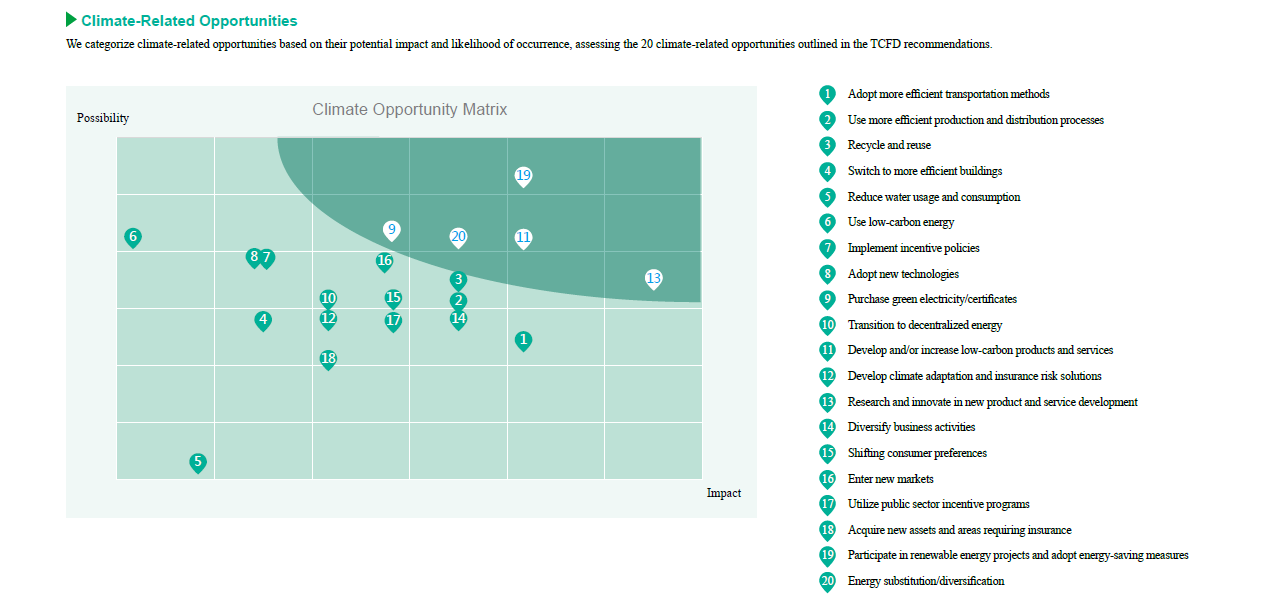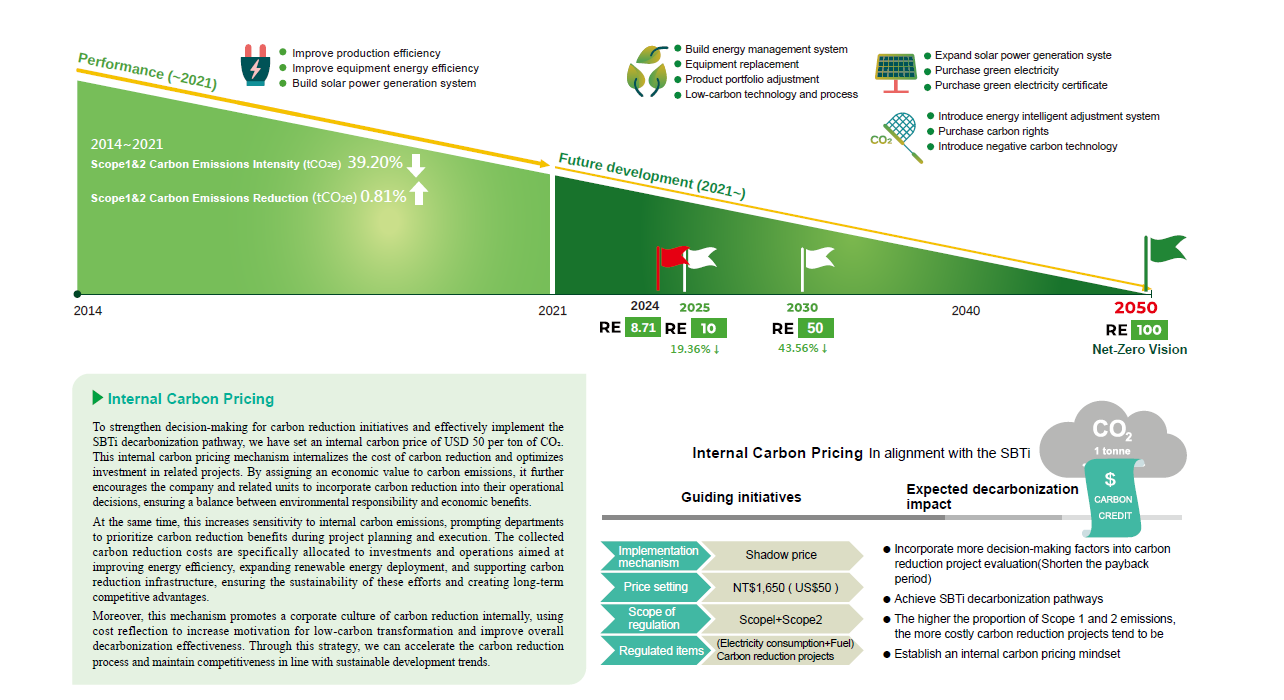Darfon continuously implements carbon management and sets proactive carbon reduction targets in line with maintaining global warming within 1.5°C. We have established Science-Based Targets (SBT) and submitted an application to the Science Based Targets initiative (SBTi).
Taking 2024 as an example, Scope 1 & 2 emissions for Dafon are primarily sourced from purchased electricity, accounting for 92.9%. Within Scope 3, the main emission sources are Category 3.1 (Purchased Goods and Services) and Category 3.11 (Use of Sold Products), which together account for 72.9%. This highlights that increasing the share of renewable energy usage, product eco-design, and low-carbon supply chain management are critical challenges that need to be addressed moving forward.
Looking ahead, Dafon is committed to passing the SBTi’s verification process and aims to effectively manage greenhouse gas emissions through diversified energy-saving and carbon reduction initiatives. We will implement our SBT reduction targets and progressively work toward the global vision of achieving net-zero emissions by 2050.
2031 SBT Carbon Reduction Plan
- Scope 1 & 2 Emissions: Reduce by 48.4% from the 2021 baseline.
- Scope 3 (Categories 3.1 & 3.11) Emissions: Reduce by 27.5% from the 2021 baseline.
2050 RE100 Targets
- 2025: 10% Renewable Energy (RE)
- 2030: 50% Renewable Energy (RE)
- 2050: 100% Renewable Energy (RE)
SBT Carbon Reduction Plan
Darfon continues to implement carbon management and formulate active carbon reduction targets, setting science-based carbon reduction targets (SBT) in order to maintain global warming at 1.5°C, and submitted an application to SBTi.
2031 SBT Carbon Reduction Plan
Scope 1 & 2 carbon emissions: Using 2021 as the base year, the reduction will be 48.4%.
Category 3 (C3-1&C3-11) emissions: Using 2021 as the base year, the reduction will be 27.5%.
2050 RE 100 Target
2025: RE 10
2030: RE 50
2050: RE 100
Governance
Darfon's highest governance unit in climate change management is the Corporate Sustainability Development Committee, with the chairman serving as the chairman. It regularly reports to the board of directors on the promotion and implementation of climate change management every year. Through the authorization of the administrative system, the responsible unit for climate change-related risk management is the Risk Management Committee, which is responsible for formulating risk policies, supervising, and maintaining risk management plans.
Strategy
Considering the impact time and probability of occurrence, it is divided into short-term (within 1-3 years), medium-term (within 3-5 years), and long-term (>10 years), and through analysis and evaluation, risks and opportunities are identified.
Climate risks: Six major risks include greenhouse gas emission reduction and disclosure, greenhouse gas emission price increase, customer behavior changes, raw material costs, extreme climate and average temperature increase.

Climate opportunities: Five opportunities were identified: introducing renewable energy and promoting energy-saving measures, innovative development of low-carbon products, energy substitution and diversification, and purchasing green power certificates, which are speculated to bring benefits such as financial income or cost reduction.

Risk Management
Darfon considers climate-related risk management policies, actual assessment practices, preventive measures, etc., discusses with various departments and quantifies indicators, implements specific methods for handling various risks to each department, and holds regular risk assessment management processes every year , to ensure that changes in the risk can be fully understood and mastered, and relevant reduction management methods and measures can be formulated in a timely manner.





